|
| Links | Identification Notes: This appears to be a quite variable in terms amount of white present on the abdomen. In females T1 always has lots of long yellowish white hair, but we have seen completely black hair on the rest of the tergites in South Georgia and extensive amounts of partial lateral white bands on T2-3 in the Appalachians. Similarly Georgia populations have all dark brown to black hairs on the sternites and in Appalachian populations are almost entirely light colored. Males are similarly all black in Georgia and Appalachian populations with loose white complete to incomplete hair bands on all tergites and light hairs on the sternites.
|
80x5 -
240x3 -
240x4 -
320x1 -
320x2 -
320x3 -
640x1 -
640x2
Set display option above.
Click on
images to enlarge. |
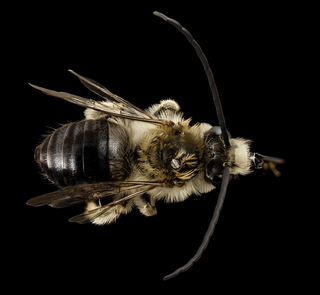
© Copyright source/photographer
· 5
Eucera dubitata, m, ga, baker, back |
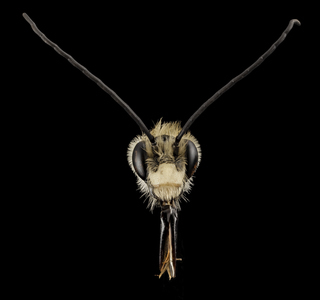
© Copyright source/photographer
· 5
Eucera dubitata, m, ga, baker, face |
|
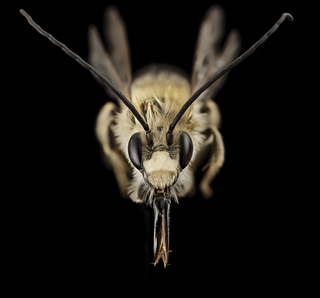
© Copyright source/photographer
· 5
Eucera dubitata, m, ga, baker, face |
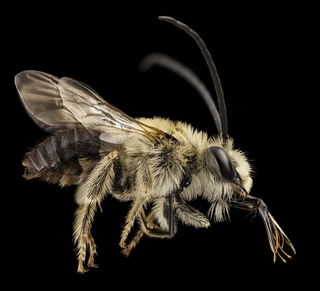
© Copyright source/photographer
· 5
Eucera dubitata, m, ga, baker, side |
|
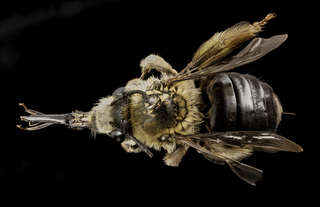
© Copyright source/photographer
· 5
Eucera dubitata, f, ga, baker, back |
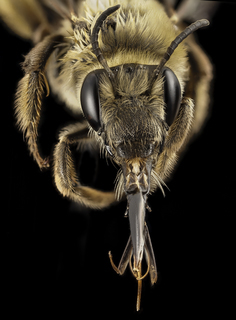
© Copyright source/photographer
· 5
Eucera dubitata, f, ga, baker, face |
|
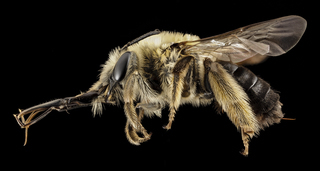
© Copyright source/photographer
· 5
Eucera dubitata, f, ga, baker, side |
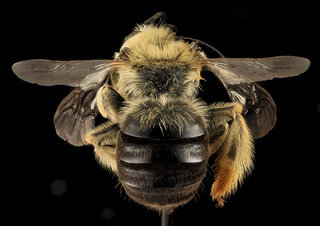
© Copyright source/photographer
· 5
Eucera dubitata, F, Back, OH Washington County |
|
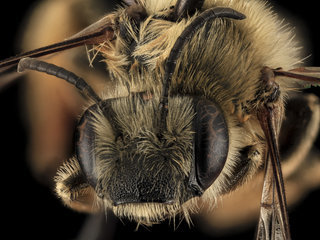
© Copyright source/photographer
· 5
Eucera dubitata, F, Face, OH, Washington County |
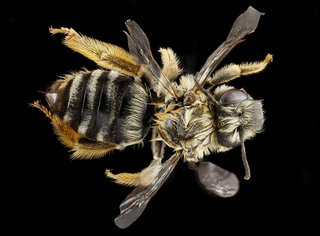
© Copyright source/photographer
· 5
Eucera dubitata, F, back, West Virginia, Pleasants County |
|
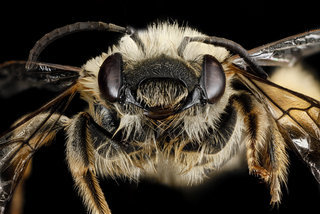
© Copyright source/photographer
· 5
Eucera dubitata, F, face, West Virginia, Pleasants County |
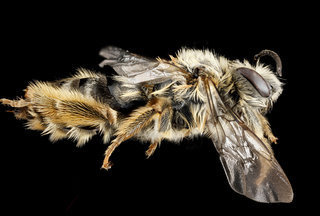
© Copyright source/photographer
· 5
Eucera dubitata, F, side, West Virginia, Pleasants County |
|
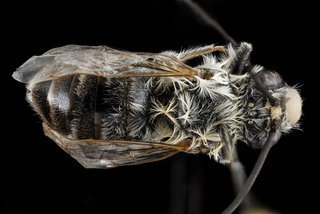
© Copyright source/photographer
· 5
Eucera dubitata, M, back, West Virginia, Pleasants County |
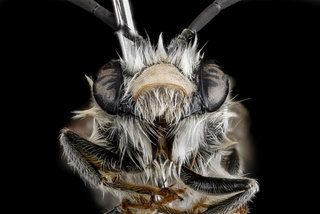
© Copyright source/photographer
· 5
Eucera dubitata, M, face, West Virginia, Pleasants County |
|
Overview |
Reprinted with permission from: Mitchell, T.B. 1962 Bees of the Eastern United States. North Carolina Agricultural Experiment Station Technical Bulletin No. 152.
FEMALE—Length 14.5-15 mm., breadth of abdomen 5.5-6 mm.; black, the antennal flagella more piceous beneath; legs blackish, the apical tarsal segments becoming brownish-testaceous, spurs pale yellowish, tegulae testaceous-hyaline; wings lightly but uniformly infuscated, veins brownish to piceous; cheeks subequal to eyes in width; clypeus slightly protuberant, its median length somewhat greater than half the distance between eyes below; eyes subparallel; mandibles rounded or sub- truncate at apex; basal segment of flagellum slightly shorter than segments 2 and 3 combined; mid and hind tibial spurs relatively straight and simple, tips somewhat curved but not abruptly hooked or recurved; punctures of clypeus quite coarse but densely crowded in large part, those on labrum somewhat separated at each side; supraclypeal area with scattered, rather coarse, sparse punctures, lateral areas of face below level of antennae quite closely and deeply punctate, surface above antennae dull, sparsely and obscurely punctate adjacent to eye, becoming rather coarsely but shallowly rugoso-punctate medially, a limited area adjacent to lateral ocelli shining and impunctate; cheeks finely but rather deeply and closely punctate; median posterior area of scutum shining, punctures rather deep and quite coarse, well separated but hardly sparse, becoming somewhat finer and close laterally and anteriorly, and more narrowly across posterior margin; scutellum very finely, closely and distinctly punctate; pleura dull, punctures quite close and rather fine; posterior face of propodeum dull and tessellate, punctures very shallow, quite sparse, dorsal area becoming narrowly and shallowly rugose along upper margin laterally, the lateral faces dull, closely and finely punctate below and posteriorly, more sparsely so above; basal abdominal tergum quite coarsely and closely punctate across the broad median area, becoming finer and closer laterally, the rather broad, apical margin shining and impunctate; punctures of terga 2-5 fine but deep and distinct, somewhat separated on 2-4, densely crowded on 5, apical impressed areas punctate in part, punctures somewhat finer and more sparse than on basal areas, apical margins rather narrowly shining and impunctate; pygidium triangular, tip narrowly rounded; pubescence rather copious and elongate, entirely pale ochraceous on head, thorax and legs, somewhat more brownish on outer surface of mid tibiae apically, and basitarsi with pale brownish hairs beneath, hind tibial scopa yellowish; pubescence of basal abdominal tergum quite copious and elongate, entirely pale, almost white, apical rim largely bare; discs of terga 2-5 with quite dense, short fuscous pubescence basally, median area following this more thinly, dark pubescent, apical impressed area with subappressed dark pubescence over the punctate area, the apical, impunctate rims bare; apical margin of tergum 5 narrowly pale brownish pubescent, and tergum 6 brownish pubescent on each side.
MALE—Length 11.5-12 mm., breadth of abdomen 4-4.5 mm.; black, the clypeus and lab- rum entirely yellow; legs more piceous, apical tarsal segments brownish-testaceous, spurs pale yellow, tegulae yellowish-hyaline; wings lightly but uniformly brownish, veins pale testaceous to piceous; apical margins of abdominal terga very narrowly testaceous-hyaline; cheeks subequal to eyes in width; clypeus only slightly protuberant, its median length somewhat greater than half the distance between eyes below; eyes very slightly convergent below; mandibles entire or obscurely bidentate apically; basal segment of flagellum considerably longer than pedicel, segment 2 about three times longer than segment 1 and pedicel combined; tibial spurs slightly curved at tip, but neither hooked nor recurved; punctures of clypeus rather coarse and close throughout, those on labrum fine and close medially, becoming quite sparse laterally; supraclypeal area dull and rather sparsely punctate, lateral areas of face below level of antennae finely, closely and shallowly punctate, surface above antennae dull, very sparsely and obscurely punctate adjacent to eye margin, the more median punctures rather deep, distinct and quite close, a limited area adjacent to lateral ocellus shining and impunctate; cheeks rather dull, punctures very fine, quite close but irregular; median area of scutum posteriorly somewhat shining, punctures quite deep, distinct and well separated, becoming close laterally, anteriorly, and to some degree posteriorly, scutellum somewhat shining anteriorly, punctures rather fine, slightly separated, becoming densely crowded laterally and posteriorly; pleura dull, punctures shallow rather close but not crowded; posterior face of propodeum somewhat shining, punctures shallow and vague, dorsal area becoming irregularly reticulate or striate along upper margin, lateral faces dull, shallowly and rather closely punctate; punctures of abdominal terga quite deep and distinct, surface more or less shining, apical impressed areas punctate in part, only the narrow apical rims impunctate, punctures becoming more minute on the more apical terga, slightly but not widely separated in general, not much closer at sides than in mid-line; pubescence long, copious and erect, entirely pale ochraceous to whitish on head and thorax, legs entirely pale pubescent, and basal tergum with elongate and rather copious pale pubescence, with a few short, dark hairs apically on each extreme side; terga 2-5 with or without narrow, subapical whitish fasciae, discs of 2-6 with rather short but erect dark pubescence which is rather thin and does not obscure the surface, impressed areas with more subappressed dark hairs, the hairs becoming more elongate on the more apical terga; tergum 6 more brownish pubescent apically; median length of pygidial plate slightly greater than basal width, margins carinate, rather strongly converging apically to the narrowly rounded or subtruncate apex; sterna 7 and 8 as shown (fig. 89); genital armature similar to 1iarnata (fig. 88).
DISTRIBUTION — Minnesota to Pennsylvania, south to Georgia, April to June.
FLOWER RECORDS—Aesculus, Melilotus, Robinia and Salvia. Robertson (1929) records dubitata on Astragalus, Dicentra and Mertensia.
|
|
|
Names | |
|
|
| Supported by | |
Updated: 2024-04-19 22:03:06 gmt
|